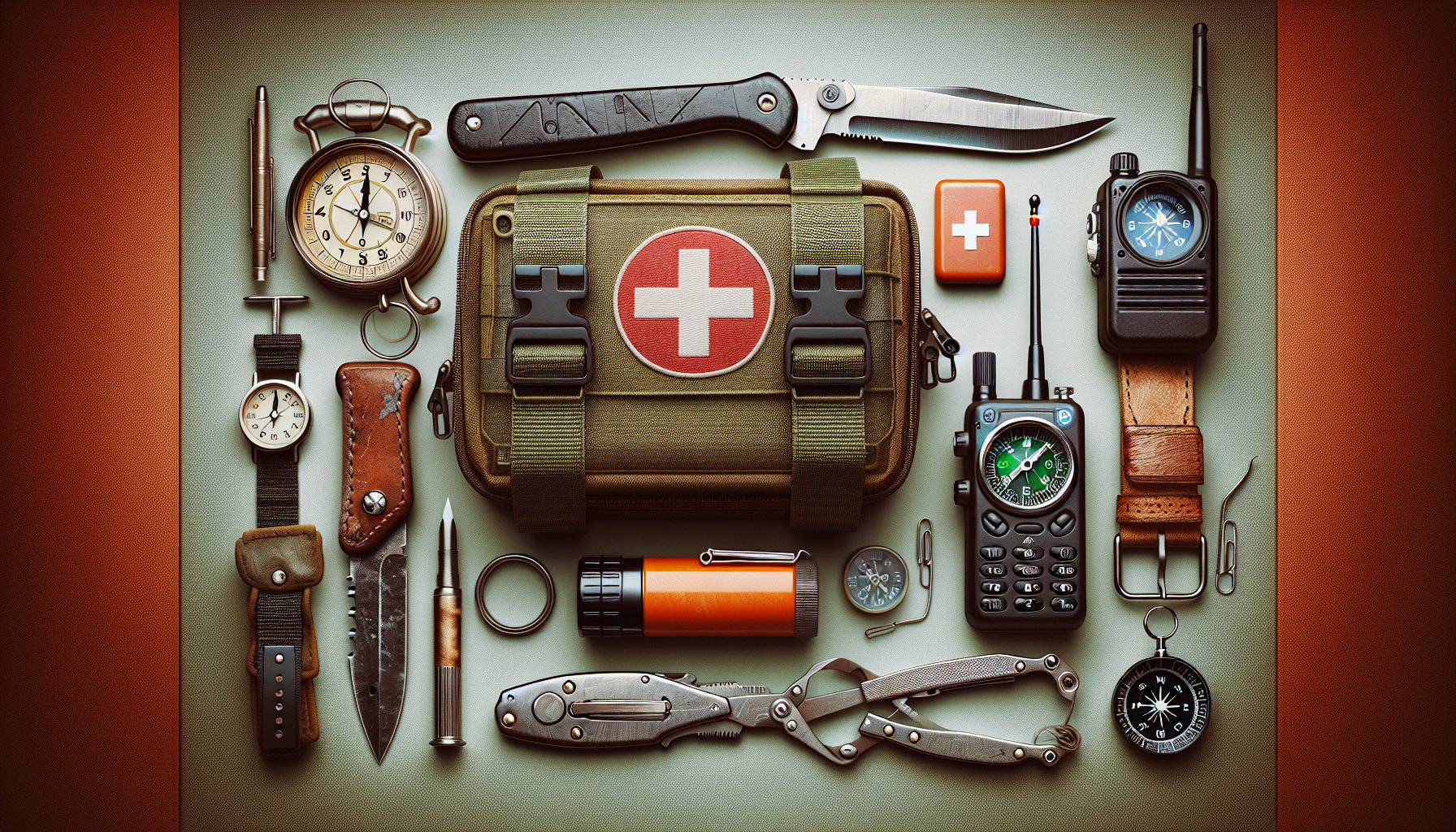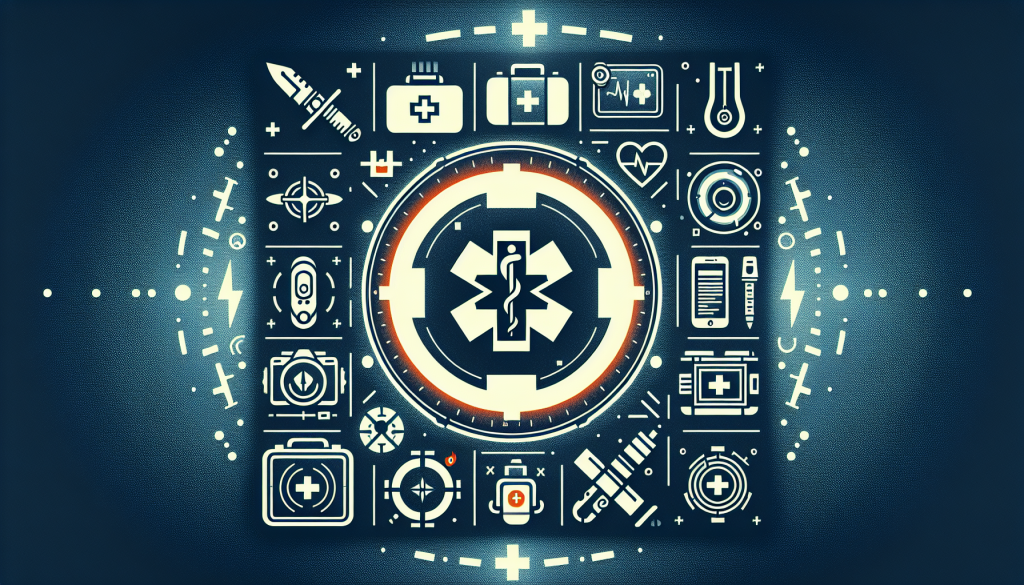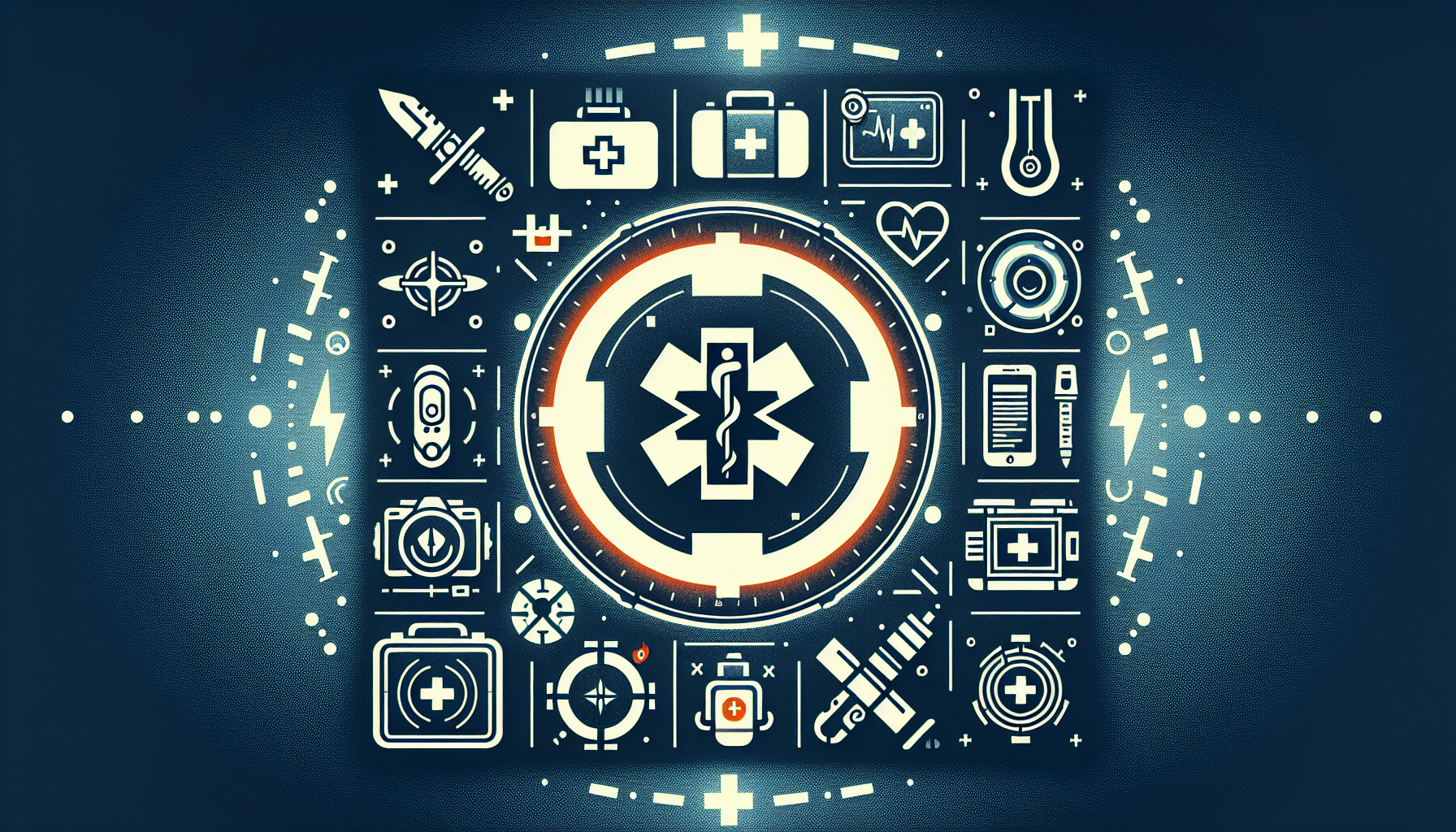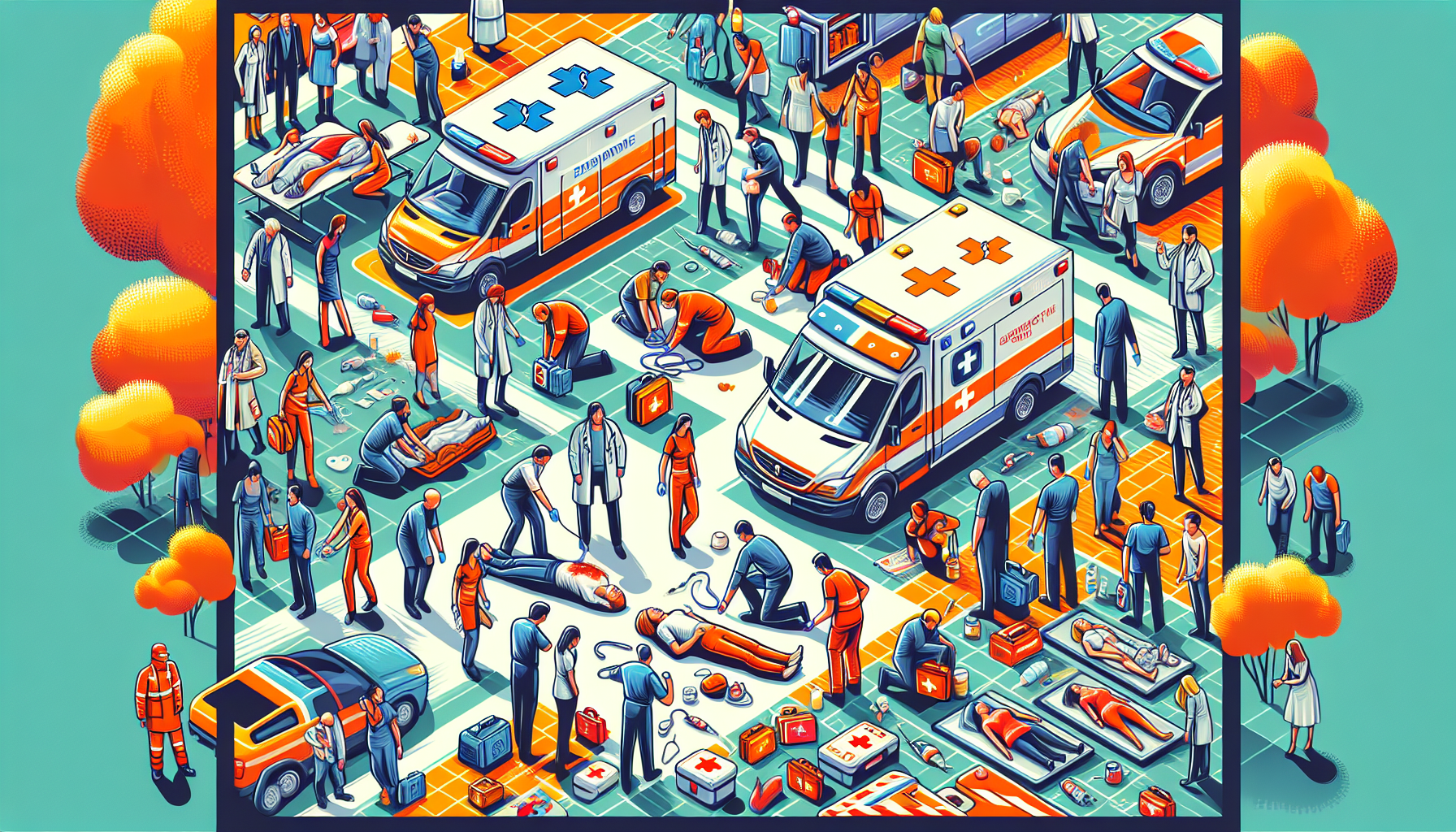Essential Skills For Emergency Response And Survival
Essential Skills For Emergency Response And Survival
In the fast-paced and unpredictable world we live in, being equipped with essential skills for emergency response and survival is more important than ever. From natural disasters to unforeseen emergencies, knowing how to handle these challenging situations can mean the difference between life and death. Whether you’re a novice or a seasoned veteran, this article will guide you through the essential skills needed to stay calm, think critically, and take decisive action in times of crisis. From basic first aid techniques to effective communication strategies, you’ll learn how to be prepared for any emergency that may come your way. So, let’s dive into these vital skills and ensure that you are ready to face any adversity with confidence and resilience.

Communication Skills An Essential Skills For Emergency Response And Survival
Effective Verbal Communication
Effective verbal communication is a crucial skill when it comes to emergency response and survival situations. Being able to clearly and confidently articulate information, instructions, and requests can help ensure that everyone involved is on the same page and working towards the same goal. Remember to speak clearly and loudly enough for everyone to hear you, but also remain calm and composed to avoid causing panic. Clearly state any directions or actions that need to be taken and be receptive to any questions or concerns from others.
Active Listening
Active listening is another important aspect of effective communication in emergency situations. It involves not only hearing what others are saying but also understanding and responding appropriately. Pay attention to both verbal and non-verbal cues, such as body language and facial expressions, to better comprehend the needs and concerns of those around you. By demonstrating that you are attentively listening, you can create an environment of trust and support, allowing for effective collaboration and problem-solving.
Clear and Concise Messaging
In high-stress situations, clear and concise messaging is vital. Avoid using jargon or technical terms that may confuse others and instead focus on using simple and straightforward language. Break down complex information into small, understandable chunks and use visual aids or gestures if possible to enhance understanding. Time is often of the essence during an emergency, so make every effort to convey your message efficiently and accurately.
Non-Verbal Communication
Non-verbal communication refers to the transmission of messages or information without the use of words. In emergency situations, where chaos and noise may be present, non-verbal cues can play a crucial role in conveying and understanding important information. Use hand signals, gestures, and facial expressions to supplement and reinforce your verbal communication. Additionally, be mindful of your own non-verbal cues, as they can influence how others perceive and interpret your messages.
First Aid and Medical Skills
CPR (Cardiopulmonary Resuscitation)
Knowing how to perform CPR can make a life-or-death difference in emergency situations. CPR is a technique used to manually compress the chest and provide rescue breaths to a person who has experienced a cardiac arrest. By maintaining blood flow and oxygenation, CPR can sustain a person’s life until professional medical help arrives. Learning how to properly perform CPR and staying up to date with the latest techniques and guidelines is essential for anyone involved in emergency response and survival situations.
Basic Wound Care
Knowing how to provide basic wound care is crucial when immediate medical help may not be readily available. From cleaning and disinfecting wounds to dressing and bandaging them, proper wound care techniques can prevent infection and facilitate healing. Take the time to learn about different types of wounds and the appropriate methods for treating them. Additionally, ensure that you have access to essential first aid supplies, such as antiseptics, bandages, and adhesive tape, in case of emergencies.
Emergency Medical Treatment
Emergency medical treatment involves providing immediate care for life-threatening injuries, illnesses, or conditions until professional medical assistance can be obtained. This may include stabilizing someone who is experiencing severe bleeding, managing a person in shock, or immobilizing a suspected spinal injury. Understanding basic emergency medical treatment techniques and protocols can make a significant difference in the outcomes of emergency situations. Consider taking courses or training programs that cover essential emergency medical skills.
Triage
triage is a vital skill in emergency situations where there are limited resources and multiple casualties. It involves assessing and prioritizing the severity of injuries or illnesses to determine who receives immediate medical attention first. Learning how to quickly evaluate patients, categorize their conditions, and make informed decisions based on the severity of their injuries or illnesses can help ensure that critical cases are treated promptly. Triage skills are especially important in mass casualty incidents or natural disasters when the number of patients exceeds available resources.
Administering Medications
In emergency situations, there may be a need to administer medications to individuals who require immediate treatment. Understanding the proper administration techniques, dosage calculations, potential side effects, and contraindications of common emergency medications is essential for those involved in emergency response and survival. Always ensure that you have a good understanding of medication dosages and route of administration, and follow any protocols or guidelines provided by medical professionals or authorities.
Emergency Planning and Preparedness
Risk Assessment
Conducting a thorough risk assessment is a crucial step in emergency planning and preparedness. It involves identifying potential hazards and evaluating their likelihood of occurrence and potential impact. By understanding the risks associated with a particular environment or situation, you can develop effective strategies to mitigate or manage those risks. Consider factors such as weather conditions, geographical features, infrastructure vulnerabilities, and human factors when conducting a risk assessment.
Emergency Response Planning
Emergency response planning involves developing a comprehensive plan to guide actions and responses during emergency situations. This includes identifying key roles, responsibilities, and resources required for effective emergency response. Collaborate with relevant stakeholders and professionals to create a plan that outlines specific actions to be taken, communication protocols, evacuation procedures, and resource management strategies. Regularly review and update the plan to ensure its relevance and effectiveness.
Resource Management
Having efficient resource management skills is essential during emergency situations where resources may be limited or scarce. This includes understanding how to allocate resources effectively, prioritize their use, and manage logistics. By effectively managing resources such as personnel, equipment, supplies, and facilities, you can optimize the response and increase the chances of successful outcomes. Continuously evaluate and reassess resource availability and needs to make informed decisions in real-time.
Evacuation Procedures
Knowing how to safely and efficiently evacuate individuals from an area during emergency situations is crucial. Develop and familiarize yourself with evacuation procedures specific to your location or situation. Identify evacuation routes, assembly points, and shelter locations in advance. Ensure that all individuals involved in emergency response and survival are aware of the evacuation procedures and know how to implement them. Regularly practice mock evacuations to ensure everyone is well-prepared and understands their roles.
Emergency Preparedness Kits
emergency preparedness kits, also known as go-bags or bug-out bags, contain essential items and supplies that can sustain individuals during emergencies or when immediate evacuation is required. These kits should include necessary items such as water, food, clothing, first aid supplies, communication devices, personal documents, and tools. Customize your kits based on local conditions, potential risks, and personal needs. Regularly review and update the contents of your emergency preparedness kits to ensure they remain relevant and functional.
Physical Fitness and Endurance
Strength and Conditioning
Physical strength and conditioning are essential for emergency response and survival. Engaging in strength training exercises can help improve overall body strength, allowing you to perform physically demanding tasks more effectively. Focus on exercises that target major muscle groups, such as squats, deadlifts, push-ups, and pull-ups. Consult with a healthcare professional or fitness instructor to develop a strength training program that suits your individual needs and capabilities.
Endurance Training
Endurance training is crucial for building cardiovascular fitness and stamina, which are essential in emergency response and survival situations. Activities such as running, swimming, cycling, or hiking can help improve endurance levels. Start with moderate-intensity workouts and gradually increase the duration and intensity over time. Remember to listen to your body and seek medical advice if you have any underlying health conditions or concerns.
Flexibility and Mobility
Maintaining good flexibility and mobility can enhance your overall physical performance and reduce the risk of injuries during emergency situations. Incorporate stretching exercises into your fitness routine to enhance joint flexibility and muscle elasticity. Activities such as yoga, Pilates, or dynamic stretching can help improve flexibility and mobility. Focus on stretching major muscle groups and pay extra attention to areas prone to tightness or stiffness.
Stamina Building
Stamina building involves improving your overall endurance and ability to sustain physical activity for extended periods. Engaging in regular aerobic exercises such as jogging, swimming, or cycling can help increase your stamina levels. Gradually increase the duration and intensity of your workouts to challenge your cardiovascular system and improve your body’s ability to deliver oxygen and nutrients to the muscles efficiently.

Leadership and Decision-Making Skills
Effective Decision-Making
Effective decision-making skills play a pivotal role in emergency response and survival. This involves gathering all the necessary information, analyzing the situation, and considering the potential outcomes before making a decision. Act decisively, but also be open to input and feedback from others. Evaluate and reassess your decisions when new information becomes available. Practice making decisions under simulated emergency scenarios to sharpen your skills.
Critical Thinking
Critical thinking involves analyzing and evaluating information objectively and logically. In emergency situations, critical thinking skills can help you assess the situation, identify potential risks and solutions, and make informed decisions. Cultivate the habit of questioning assumptions, seeking multiple perspectives, and considering alternative options. Develop your analytical and problem-solving skills through practice and continuous learning.
Problem-Solving
Problem-solving skills are crucial when faced with unexpected challenges or obstacles during emergency situations. Being able to think creatively, adapt to changing circumstances, and propose effective solutions can make a significant difference in the outcome. Develop a systematic approach to problem-solving by breaking down complex issues into smaller, more manageable parts. Collaborate with others to brainstorm ideas and leverage collective intelligence.
Delegation
Delegation is an essential skill in emergency situations where multiple tasks need to be accomplished simultaneously. Effective delegation involves assigning appropriate tasks to individuals based on their capabilities, providing clear instructions, and ensuring that they have the necessary resources to carry out their responsibilities. Delegate tasks based on each individual’s strengths and expertise, and maintain open lines of communication to monitor progress and provide support.
Conflict Management
Conflict management skills are crucial in high-stress situations where tensions and disagreements may arise. It is important to address conflicts promptly and constructively to maintain a harmonious and cooperative environment. Practice active listening, remain calm and composed, and encourage open dialogue to resolve conflicts. Seek win-win solutions and use conflict resolution techniques to facilitate effective communication and collaboration.
Navigational Skills
Map Reading
Developing strong map reading skills is essential for efficient navigation in various environments. Learn how to interpret topographic maps and understand key features such as contour lines, legends, and symbols. Familiarize yourself with map scales, grid coordinates, and coordinate systems. Practice using maps in different terrains and conditions, and learn how to orient yourself using prominent landmarks or a compass.
Compass Navigation
Understanding how to use a compass is crucial in situations where reliable landmarks may be unavailable or obscured. Learn how to read a compass, set a course, and navigate using bearings and azimuths. Pay attention to declination and adjust your compass readings accordingly. Practice navigating with a compass in different terrains and conditions to build confidence and proficiency.
GPS Navigation
Global Positioning System (GPS) technology has become an indispensable tool for navigation. Familiarize yourself with the operation and features of GPS devices or smartphone navigation apps. Learn how to input waypoints, create routes, and navigate using GPS coordinates and satellite signals. Keep a backup power source and spare batteries for GPS devices in case of emergencies.
Orienteering
Orienteering is a sport that combines navigation skills, physical fitness, and mental acuity. Participating in orienteering activities can help improve your map reading, compass navigation, and decision-making abilities. Look for local orienteering clubs or events to practice and enhance your skills. Orienteering in challenging terrains and environments can provide valuable experience in navigating under stress.
Fire Safety and Prevention
Fire Extinguisher Usage
Knowing how to properly use a fire extinguisher can help control and extinguish small fires before they escalate. Understand the different types of fire extinguishers and their appropriate uses. Remember the PASS technique: Pull the pin, Aim at the base of the fire, Squeeze the handle, and Sweep side to side. Regularly inspect and maintain fire extinguishers to ensure their functionality.
Fire Safety Procedures
Adhering to fire safety procedures is crucial to prevent fires and minimize their potential impact. Follow safety protocols such as not smoking in restricted areas, properly storing flammable materials, and maintaining functional smoke detectors and fire alarms. Educate yourself and others on evacuation routes, assembly points, and emergency communication procedures. Regularly practice fire drills to ensure everyone is familiar with the necessary actions in case of a fire.
Fire Escape Planning
Having a well-thought-out fire escape plan can save lives during emergencies. Identify multiple escape routes from different areas of your home or workplace, ensuring that they are clear and easily accessible. Establish designated meeting points outside the building to ensure accountability and safety. Regularly review and practice your fire escape plan with all occupants to ensure its effectiveness and efficiency.
Identifying Fire Hazards
Being able to identify potential fire hazards in your environment is essential for proactive fire prevention. Conduct regular inspections and risk assessments to identify and eliminate or minimize potential ignition sources or fuel for fires. Educate yourself and others about common fire hazards, such as faulty wiring, overloaded electrical outlets, and improper storage of flammable materials. Stay vigilant and report any potential hazards to the appropriate authorities.
Psychological Resilience
Stress Management
Building effective stress management skills is crucial for maintaining mental and emotional well-being during emergency situations. Practice relaxation techniques such as deep breathing, meditation, or visualization to reduce stress levels. Engage in regular physical exercise to release tension and promote mental resilience. Seek social support and communicate your feelings and concerns with trusted individuals. Prioritize self-care activities to rejuvenate and recharge.
Emotional Resilience
Developing emotional resilience can help you navigate the emotional challenges and uncertainties that arise during emergency situations. Cultivate self-awareness and emotional regulation skills to manage anxiety, fear, or grief effectively. Seek support from mental health professionals or counselors if needed. Practice positive coping strategies such as journaling, engaging in hobbies, or connecting with loved ones to enhance emotional well-being.
Coping Strategies
Having a repertoire of healthy coping strategies can help you maintain psychological well-being during and after emergency situations. Identify and practice coping mechanisms that work best for you, such as engaging in creative activities, practicing mindfulness, or maintaining a routine. Avoid unhealthy coping methods such as substance abuse or isolation, as they can exacerbate stress and hinder recovery. Be open to trying new coping strategies and adapt them as needed.
Post-Traumatic Stress Disorder (PTSD) Recognition
Recognizing the signs and symptoms of post-traumatic stress disorder (PTSD) is crucial in emergency response and survival situations. PTSD can develop after experiencing or witnessing a traumatic event. Be aware of common symptoms such as flashbacks, nightmares, avoidance, or hyperarousal. If you or someone around you shows signs of PTSD, seek professional help and support. Encourage open communication and create a safe and supportive environment for individuals to process their experiences.
Survival Skills
Shelter Construction
Knowing how to construct a shelter is essential for survival in outdoor or wilderness emergency situations. Learn various shelter-building techniques, such as using natural materials or utilizing available resources. Consider factors such as weather conditions, terrain, and accessibility when selecting a suitable shelter location. Regularly practice building different types of shelters to increase your proficiency and adaptability.
Water Sourcing and Purification
Access to safe drinking water is paramount in emergency survival situations. Learn how to source and purify water from various natural sources such as streams, lakes, or rivers. Understand different water purification methods such as boiling, chemical treatment, or using water filters. Carry essential water purification tools and supplies in your emergency preparedness kit.
Food Foraging and Hunting
Knowing how to identify edible plants, fruits, and insects can provide an additional food source in emergency survival situations. Educate yourself on local flora and fauna and learn about safe foraging practices to avoid consuming poisonous or harmful substances. If circumstances allow, learn basic hunting and trapping techniques to catch small game for sustenance. Always comply with local laws and regulations regarding hunting and foraging.
Wilderness Navigation
Navigating in the wilderness without modern technology requires specific skills and knowledge. Practice using natural navigation methods such as observing celestial bodies, interpreting weather patterns, or using natural indicators to orient yourself. Understand how to use natural features, such as rivers, mountains, or trails, for efficient navigation. Carry appropriate navigational tools such as maps, compasses, or GPS devices as backup.
Basic Knots and Rope Skills
Knowing how to tie essential knots and use ropes effectively can be invaluable in emergency situations. Learn common knots such as the square knot, clove hitch, or bowline, which can be used for various purposes such as shelter construction, securing equipment, or creating makeshift tools. Practice tying knots in different conditions and familiarize yourself with different types of ropes and their appropriate applications.
Emergency Communication Technology
Radio Operation
Being proficient in radio operation can significantly enhance your ability to communicate during emergency situations. Familiarize yourself with the operation and usage protocols of various types of radios, such as handheld radios or two-way radios. Understand the basics of radio frequencies, channels, and the importance of clear and concise communication. Practice using radios in different terrains and environments to ensure effective communication.
Satellite Phones and Communication Systems
Satellite phones and communication systems can provide reliable communication in remote or disaster-stricken areas where traditional communication infrastructure may be compromised. Learn how to operate satellite phones and other satellite communication devices. Understand the limitations and capabilities of these systems, and have a backup power source or additional batteries readily available.
Emergency Signal Devices
Emergency signal devices such as signal mirrors, whistles, flares, or distress flags can help attract attention and communicate distress in emergency situations. Familiarize yourself with the proper usage and signaling techniques of these devices. Keep them easily accessible in your emergency preparedness kit. Signal devices can play a vital role in search and rescue operations or during times when communication technology may not be available.
Ham Radio Operation
Amateur radio, also known as ham radio, can provide long-distance communication capabilities during emergencies or when conventional communication networks are down. Obtain the necessary licenses and training to operate ham radios legally and effectively. Join local ham radio clubs or networks to expand your reach and actively participate in emergency communication drills or events. Stay current with the latest ham radio protocols and technologies.
By developing these essential skills for emergency response and survival, you can greatly increase your ability to effectively navigate and manage challenging situations. Remember to consistently practice and update your knowledge to ensure readiness and adaptability in varying scenarios. Whether you find yourself in a natural disaster, wilderness emergency, or any other unexpected event, these skills will prove to be invaluable assets in ensuring the safety and well-being of yourself and those around you. Stay prepared, stay focused, and stay resilient!




